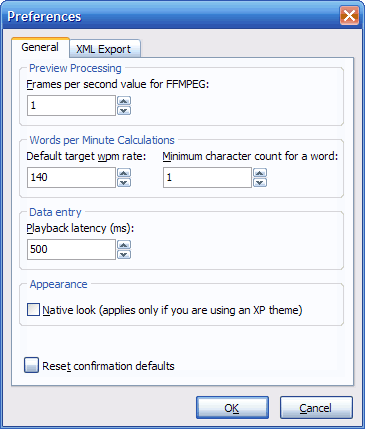

I will love to be able to do something like this: ffmpeg -start_number 94 -i source.%04d.png -vf select='eq(n\,2)+eq(n\,80)+eq(n\,150)' -vsync 0 -start_number 94 -frame_pts 1 frames_%04d.jpegĪnd get frame 96, 174 and 244 instead of 2, 80 and 150.

I already tried adding a -start_number at the end before the output, which works with regular transcodes, but it seems not to work in combination of -frame_pts In the case of a source image sequence, I only need to specify the start number (since my frames usually start in 100 or further): ffmpeg -start_number 94 -i source.%04d.png -vf select='eq(n\,2)+eq(n\,80)+eq(n\,150)' -vsync 0 -frame_pts 1 frames_%04d.jpegīut the issue is that the frame numbers that I get match the exact numbers that I asked for, which are those required from the select filter and start at 0, in the example of the image sequence, you can see that it actually starts at frame 94, and technically the movies replicate the same, their first frame is the same as 94 in image sequence, and i will love to have a way to get the output numbers be offset by a certain number so they match the corresponding "source" frame. # To convert a video to compatible HTML5 video format (mp4): ()įfmpeg -i infile.ext -acodec aac -strict experimental -ac 2 -ab 128k -vcodec libx264 -preset slow -f mp4 -crf 22 outfile.mp4įor f in *.m4a do ffmpeg -i " $f " -acodec libmp3lame -ab 320k " $.I'm doing some ffmpeg (4.1.3) transcodings by extracting specific frames from the source, in this case, the source can be either a movie or an image sequence, all working fine with the following command: ffmpeg -i source.mov -vf select='eq(n\,2)+eq(n\,80)+eq(n\,150)' -vsync 0 -frame_pts 1 frames_%04d.jpeg # To join/concatenate two mp4 videos (use double-quotes in Windows):įfmpeg -i one.mp4 -c copy -bsf:v h264_mp4toannexb -f mpegts one.tsįfmpeg -i two.mp4 -c copy -bsf:v h264_mp4toannexb -f mpegts two.tsįfmpeg -i "concat:one.ts|two.ts " -c copy -bsf:a aac_adtstoasc combined.mp4

mp4 -codec:video libvpx-vp9 -crf -b:video 0 -codec:audio libopus -vbr on -threads. For the best quality, use a CRF value (recommended range 15-35) and -b:video MUST be 0:įfmpeg -i. The flags can be found here : AVSEEKFLAGBACKWARD. Searches by time previous key frame within the specified AVStream index. int avseekframe(AVFormatContext s, int streamindex, int64t timestamp, int flags) Seek to the keyframe at timestamp. # To remux MKV video to MP4 without re-encoding audio or video streams: Answer: Found: FFmpeg Docs or Libav Docs. avi -codec:audio aac -b:audio 128k -codec:video libx264 -crf 23. AAC Audio 128kbit, h264 Video CRF 23:įfmpeg -i. # To trim a video from a given start time mm:ss to an end time mm2:ss2 (omit the -to flag to trim till the end): # To quickly extract a single frame from a video at time mm:ss and save it as a 128x128 resolution image: # To combine numbered images (frame_1.jpg, frame_2.jpg, etc) into a video or GIF: # To convert frames from a video or GIF into individual numbered images: # To extract the sound from a video and save it as MP3:


 0 kommentar(er)
0 kommentar(er)
